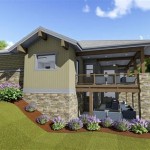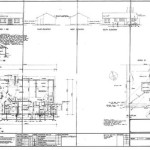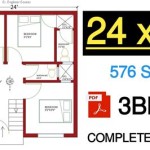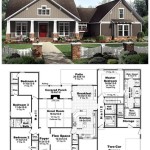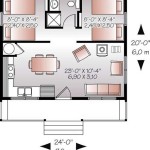2 Bedroom Narrow House Plans: Maximizing Space and Style
Narrow house plans are becoming increasingly popular, particularly in urban environments and for those seeking to maximize the utilization of limited land. Among these, 2-bedroom narrow house plans offer a practical and comfortable living solution for small families, couples, or individuals. These plans require careful consideration of space optimization, natural light integration, and efficient layout design to create a functional and aesthetically pleasing home. This article delves into the key aspects of 2-bedroom narrow house plans, exploring design principles, common layouts, and strategies for making the most of a compact footprint.
The defining characteristic of a narrow house is its limited width relative to its length. This constraint necessitates innovative design solutions to avoid cramped and uncomfortable living spaces. Properly executed 2-bedroom narrow house plans prioritize vertical space, employ open-concept layouts, and utilize strategic storage solutions to achieve a sense of spaciousness and liveability despite the confined dimensions.
Understanding the Challenges of Narrow House Design
Designing a narrow house presents unique challenges that differ significantly from designing a standard-sized home. One of the primary challenges is the limitation on natural light penetration. Narrow houses often have limited wall space available for windows, and the depth of the structure can restrict the amount of sunlight reaching the interior. This can lead to dark and gloomy interiors if not addressed properly through strategic window placement, light wells, and light-colored interior finishes.
Another challenge is the efficient circulation of air. Narrow houses can be prone to poor ventilation, particularly in areas that are far from exterior walls. Cross-ventilation is often difficult to achieve, requiring careful consideration of window and door placement, as well as the potential integration of mechanical ventilation systems. Proper airflow is crucial for maintaining a comfortable and healthy indoor environment.
Storage is also a vital consideration. With limited floor space, innovative storage solutions are essential for minimizing clutter and maximizing functionality. This can involve incorporating built-in cabinets, utilizing vertical storage options, and designing multi-functional furniture. Failure to adequately address storage needs can lead to a cramped and disorganized living space, negating the benefits of a well-designed layout.
Furthermore, accessibility can be a concern, especially in multi-story narrow houses. Staircases can consume a significant amount of floor space, and their placement can impact the overall flow of the house. Careful planning is required to ensure that stairs are both functional and aesthetically pleasing, and that they do not dominate the living space. The use of open staircases and strategic lighting can help to mitigate the impact of stairs on the overall design.
Key Design Principles for 2-Bedroom Narrow House Plans
Several key design principles can guide the creation of successful 2-bedroom narrow house plans. These principles focus on maximizing space, light, and functionality, while also creating a visually appealing and comfortable living environment.
Open-Concept Layouts: One of the most effective ways to create a sense of spaciousness in a narrow house is to utilize an open-concept layout. This involves combining the living room, dining area, and kitchen into a single, contiguous space. By eliminating interior walls, light can flow more freely throughout the house, and the feeling of confinement is reduced. Strategic furniture placement and the use of area rugs can help to define distinct zones within the open space without compromising the overall sense of openness.
Vertical Space Utilization: Maximizing vertical space is crucial in narrow house design. This can involve incorporating high ceilings, loft spaces, and vertical storage solutions. High ceilings can create a more airy and spacious feel, while loft spaces can be used for storage, a home office, or even an additional living area. Vertical storage solutions, such as tall bookshelves and cabinets, can help to keep clutter off the floor and maximize the use of limited wall space.
Strategic Window Placement: Careful window placement is essential for maximizing natural light penetration in a narrow house. Large windows should be positioned strategically to capture sunlight throughout the day. Skylights can also be used to bring light into interior spaces that are far from exterior walls. Consider incorporating clerestory windows, which are placed high on the wall, to allow light to enter while maintaining privacy. Light wells, which are open shafts that extend from the roof to the ground floor, can be used to bring natural light into the center of the house.
Light Colors and Reflective Surfaces: The use of light colors and reflective surfaces can significantly enhance the brightness and spaciousness of a narrow house. Light-colored walls and ceilings reflect light, making the space feel larger and more open. Mirrors can also be used to create the illusion of more space and to bounce light around the room. Glossy finishes on furniture and flooring can further enhance the reflective properties of the interior.
Multi-Functional Furniture: In a narrow house, every piece of furniture should serve a purpose. Multi-functional furniture, such as sofa beds, storage ottomans, and expandable dining tables, can help to maximize space and functionality. Consider incorporating built-in furniture, such as window seats with storage underneath or custom-designed shelving units, to make the most of available space. Avoid bulky or oversized furniture that can overwhelm the limited floor space.
Common Layouts for 2-Bedroom Narrow House Plans
Several common layouts are well-suited for 2-bedroom narrow house plans. These layouts typically focus on maximizing space efficiency and creating a comfortable living environment within the confined dimensions of the house.
Linear Layout: A linear layout arranges the rooms in a straight line, one after the other. This layout is particularly well-suited for very narrow houses where the width is extremely limited. Typically, the living areas (living room, dining area, and kitchen) are located at the front of the house, followed by the bedrooms and bathrooms towards the rear. This layout can be challenging in terms of natural light, as the rooms at the rear may receive less sunlight. However, strategic window placement and the use of light wells can help to mitigate this issue.
Side-by-Side Layout: In a side-by-side layout, the rooms are arranged along the length of the house, with a central hallway providing access to each room. This layout is common in two-story narrow houses, with the living areas typically located on the ground floor and the bedrooms on the upper floor. A side-by-side layout can offer good separation between living and sleeping areas, but it can also require a significant amount of space for the hallway, which can reduce the overall living area.
Two-Story Layout with Central Staircase: A two-story layout is a common choice for narrow houses, as it allows for maximizing the use of vertical space. A central staircase typically connects the two floors, with the living areas located on the ground floor and the bedrooms on the upper floor. The placement of the staircase is crucial in this layout, as it can impact the flow and functionality of the house. An open staircase can help to create a more spacious feel and allow light to penetrate the lower floor, while a closed staircase can provide better sound insulation between the floors.
Adaptable Layouts: Some narrow house plans incorporate adaptable layouts that can be customized to meet the specific needs of the homeowners. For example, a flexible space can be designed to function as a home office, a guest room, or a playroom, depending on the current needs. This type of layout can be particularly useful for growing families or for those who require a multi-functional living space.
Maximizing Functionality and Liveability
Beyond the basic layout, several strategies can be employed to maximize the functionality and liveability of a 2-bedroom narrow house. These strategies focus on optimizing storage, enhancing natural light, and creating a comfortable and inviting living environment.
Built-In Storage Solutions: Incorporating built-in storage solutions is crucial for maximizing space in a narrow house. This can involve designing custom cabinets, shelves, and drawers that fit seamlessly into the available space. Built-in storage can be integrated into walls, under staircases, and around windows to make the most of every available inch. Consider adding storage to unexpected places, such as under the bed or behind mirrors.
Enhancing Natural Light: Maximizing natural light is essential for creating a bright and airy living environment. In addition to strategic window placement, consider incorporating light-reflecting materials, such as mirrors and light-colored paint, to bounce light around the room. Skylights and light wells can also be used to bring light into interior spaces that are far from exterior walls. Avoid using heavy curtains or blinds that can block natural light.
Creating Outdoor Spaces: Even in a narrow house, it is possible to create outdoor spaces that enhance the living environment. A small balcony, patio, or courtyard can provide a valuable connection to the outdoors and create a sense of spaciousness. Consider incorporating vertical gardens or green walls to bring greenery into the outdoor space and create a more inviting atmosphere. Ensure that the outdoor space is well-integrated with the interior of the house, with easy access and a seamless transition between the indoor and outdoor areas.
Smart Home Technology: Integrating smart home technology can enhance the functionality and convenience of a narrow house. Smart lighting systems can be used to control the brightness and color temperature of the lights, creating a more comfortable and energy-efficient living environment. Smart thermostats can help to regulate the temperature and reduce energy consumption. Smart storage solutions, such as automated shelving systems, can maximize space and organization. The use of smart home technology can help to make the most of the limited space in a narrow house and create a more comfortable and efficient living environment.
Prioritizing Comfort and Aesthetics: While functionality is important, it is also essential to prioritize comfort and aesthetics in a narrow house. Choose furniture and décor that are both functional and visually appealing. Use soft textures and warm colors to create a comfortable and inviting atmosphere. Incorporate personal touches that reflect your style and personality. A well-designed narrow house should be both functional and aesthetically pleasing, providing a comfortable and enjoyable living environment for its occupants.

House Plan 940 00235 Narrow Lot 740 Square Feet 2 Bedrooms 1 Bathroom Plans Tiny Floor

Simple Narrow Lot House Plans Houseplans Blog Com

Narrow 2 Bedroom Floor Plan With Balcony

Simple Narrow Lot House Plans Houseplans Blog Com

2 Bed Craftsman House Plan For A Narrow Lot 22516dr Architectural Designs Plans

Pin On S

2 Story House Plans For Narrow Lots Blog Builderhouseplans Com

Modern 1 Story Narrow House Highland Park

Narrow 2 Bed Home Plan With Rooftop Deck 68651vr Architectural Designs House Plans

Narrow 2 Bedroom Floor Plan With Balcony


